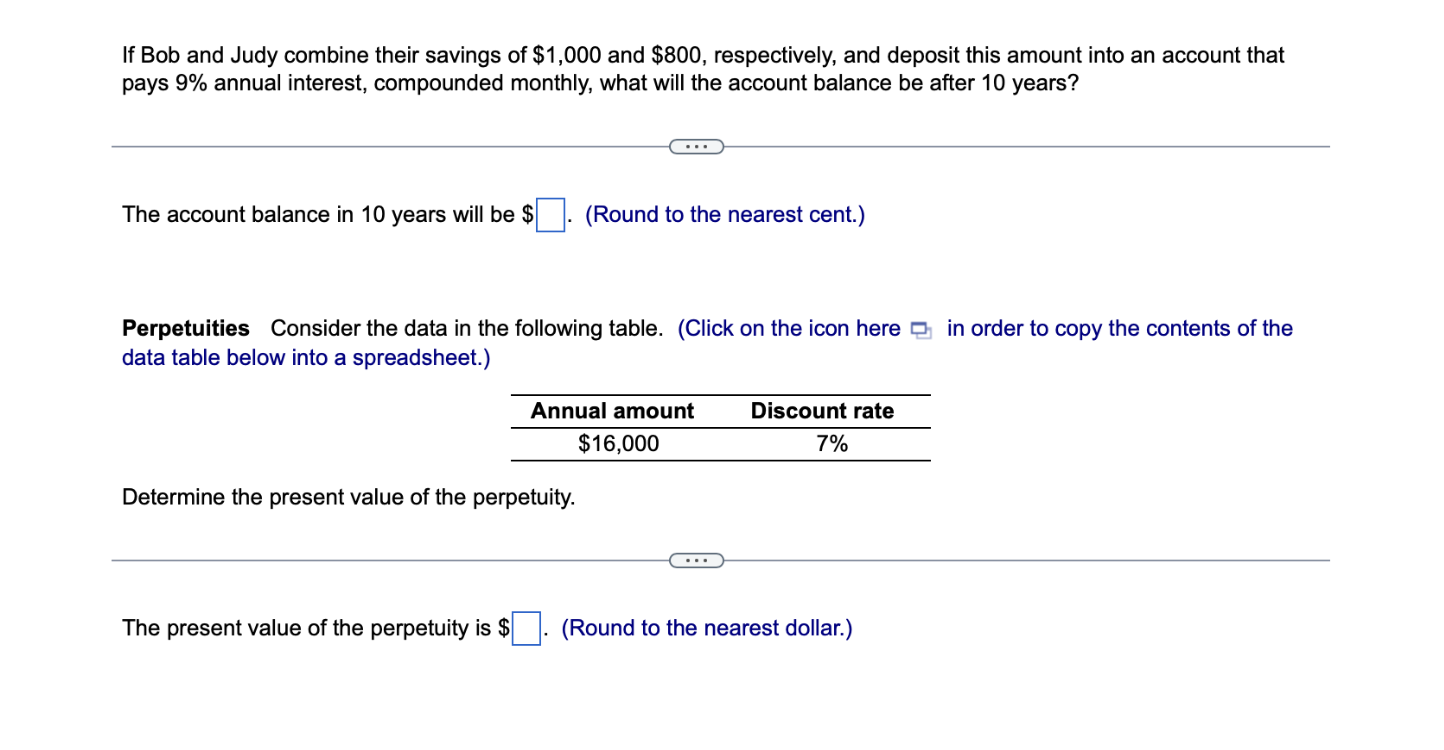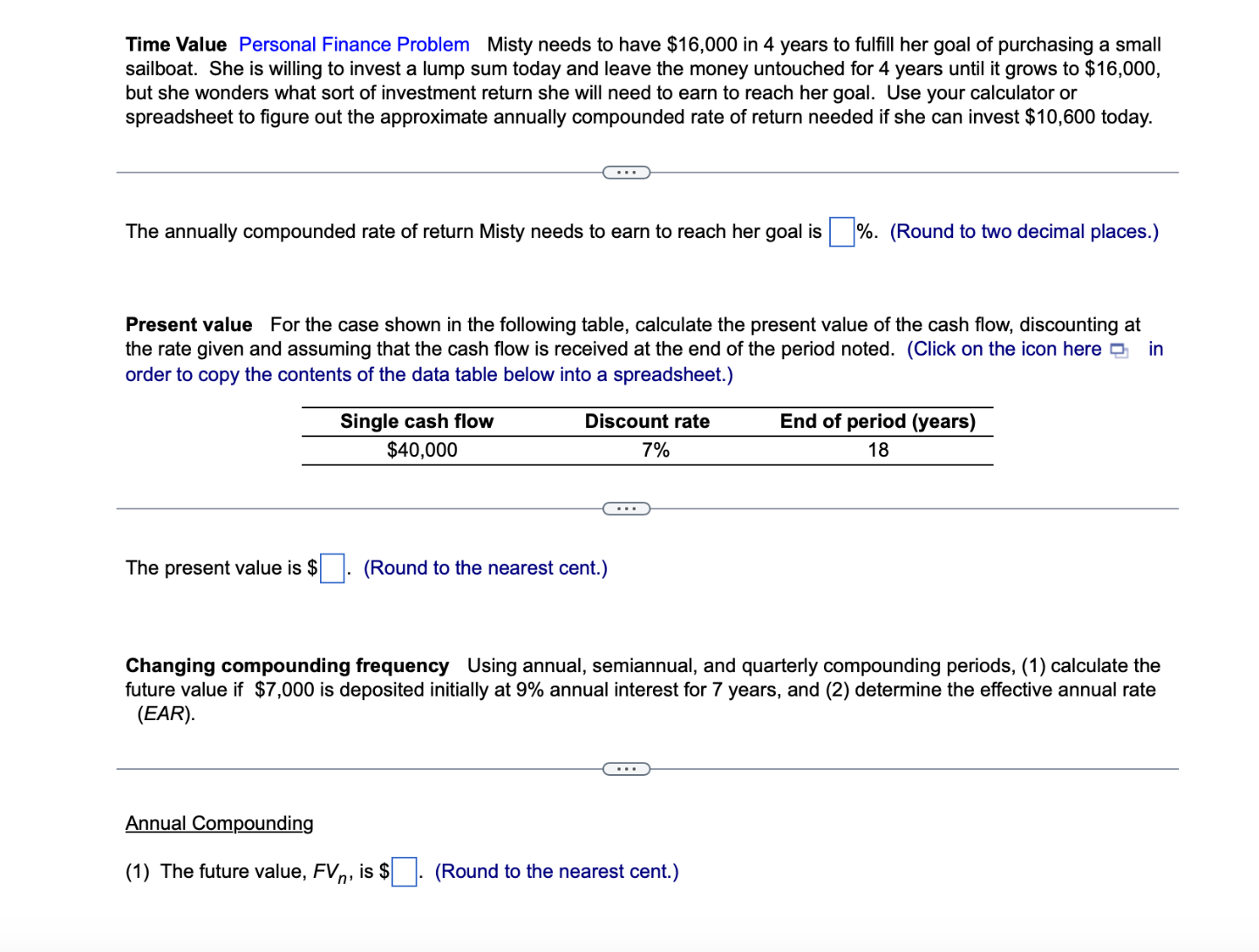Answered step by step
Verified Expert Solution
Question
1 Approved Answer
FILL IN THE BOXES FOR THE QUESTIONS ABOVE.. THANK YOU! If Bob and Judy combine their savings of $1,000 and $800, respectively, and deposit this


FILL IN THE BOXES FOR THE QUESTIONS ABOVE.. THANK YOU!
If Bob and Judy combine their savings of $1,000 and $800, respectively, and deposit this amount into an account that pays 9% annual interest, compounded monthly, what will the account balance be after 10 years? The account balance in 10 years will be $ Perpetuities Consider the data in the following table. (Click on the icon here data table below into a spreadsheet.) (Round to the nearest cent.) in order to copy the contents of the in order to copy the contents of the Determine the present value of the perpetuity. The present value of the perpetuity is $ (Round to the nearest dollar.) Time Value Personal Finance Problem Misty needs to have $16,000 in 4 years to fulfill her goal of purchasing a small sailboat. She is willing to invest a lump sum today and leave the money untouched for 4 years until it grows to $16,000, but she wonders what sort of investment return she will need to earn to reach her goal. Use your calculator or spreadsheet to figure out the approximate annually compounded rate of return needed if she can invest $10,600 today. The annually compounded rate of return Misty needs to earn to reach her goal is \%. (Round to two decimal places.) Present value For the case shown in the following table, calculate the present value of the cash flow, discounting at the rate given and assuming that the cash flow is received at the end of the period noted. (Click on the icon here order to copy the contents of the data table below into a spreadsheet.) The present value is $ (Round to the nearest cent.) Changing compounding frequency Using annual, semiannual, and quarterly compounding periods, (1) calculate the future value if $7,000 is deposited initially at 9% annual interest for 7 years, and (2) determine the effective annual rate (EAR). Annual Compounding (1) The future value, FVn, is $ (Round to the nearest cent.)Step by Step Solution
There are 3 Steps involved in it
Step: 1

Get Instant Access to Expert-Tailored Solutions
See step-by-step solutions with expert insights and AI powered tools for academic success
Step: 2

Step: 3

Ace Your Homework with AI
Get the answers you need in no time with our AI-driven, step-by-step assistance
Get Started


